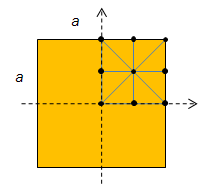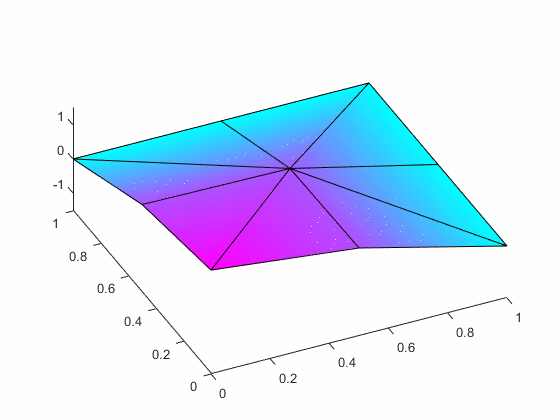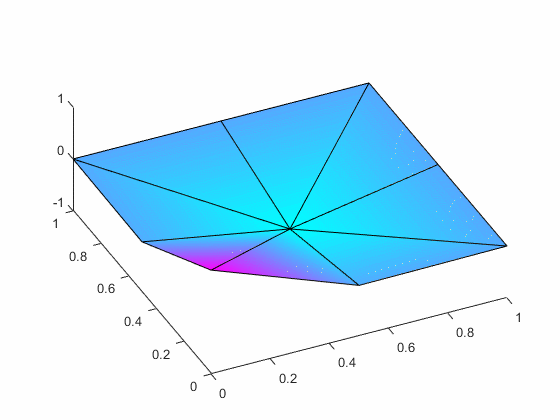|
Consider the problem of a classical square vibrating membrane with all edges
fixed against transverse displacement. The differential equation of motion can
be written as:

where T is the initial tension in the membrane and
ρ
the area density. The boundary condition is that w vanishes on all the
edges of the membrane. Taking:

leads
to:

where l
=
rw2/T.
This is the Helmholtz problem on the square, with the dependent variable
y
prescribed as zero everywhere on the boundary. Model the top right-most
quadrant of the membrane using eight equally-sized 3-node triangles and compute
the associated eigenvalues and the eigenfunctions.

Note: Use a node numbering scheme that will make assembly of the stiffness
and mass matrices as simple as possible.
As a check on your work, if you assume a
= 1 and
rw2/T = 1,then
first two eigenvalues are 4.3889 and 33.6174.
The associated first two mode shapes are:


This web site was originally
developed by
Charles Camp for
CIVL
7111.
This site is
maintained by the
Department of Civil Engineering
at the University of Memphis.
Your comments and questions are welcomed.
|



